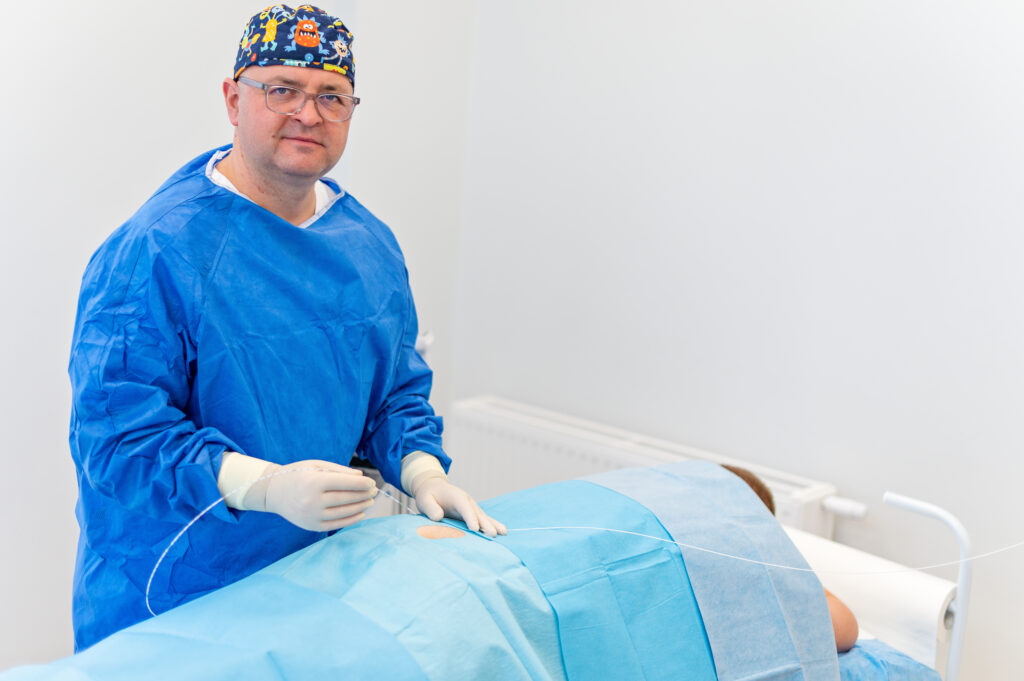
Why does the wound after Bascom Cleft Lift
heal faster than after SiLaT?
The healing time of a wound and the recovery process are among the key concerns patients consider when planning treatment for a pilonidal cyst. Procedures performed at Pilonidal Clinic fall into the category of minimally invasive surgeries, even though the Bascom Cleft Lift involves excising a flap of skin along with the cyst, while the SiLaT method involves cleaning the cyst cavity and cauterizing its interior through small skin openings.Both procedures are performed under the same tumescent anesthesia.
Aside from the moment of administering the anesthesia, patients typically experience no pain, only sensations of pulling or pressure. After both procedures, patients can immediately walk, sit, drive, and sleep on their backs. Starting the next day, they can shower without a dressing.
In the SiLaT laser treatment, small openings remain visible on the skin, but beneath the surface, a large cavity is left after the cyst walls are removed. This cavity takes approximately 4–6 weeks to close. During healing, patients can engage in normal daily activities with minimal discomfort. However, serous fluid collects in the wound and seeps through the openings, soaking into the dressing. The skin openings close only once the cavity from the removed cyst has fully healed.
In contrast, the Bascom Cleft Lift procedure involves removing a thin flap of skin, about 5–8 mm thick, along with the pilonidal cyst, while preserving the remaining subcutaneous tissue. The wound is closed tightly in layers, leaving no open space or significant tension, allowing the tissues to connect and heal quickly—typically within 2–3 weeks. A suction drain is placed during the procedure, which removes any serous fluid that may accumulate in the wound into an external container. This keeps the dressing dry, promotes faster healing, and significantly reduces the risk of infection.
The risk of bleeding in both methods is minimal due to the use of adrenaline, a vasoconstrictor administered with the anesthesia, which constricts nearby blood vessels.
In summary, both methods involve a wound that must heal. In SiLaT, this is an internal wound left after the cyst is removed through small skin openings. In Bascom Cleft Lift, the wound results from the excision of a skin flap and is covered with a flap from the opposite side. The key difference is that SiLaT leaves an open space beneath the skin, which prolongs healing time. In contrast, the Bascom Cleft Lift wound is tightly sutured without leaving open space, allowing the tissues to connect and heal more quickly.
![The most important principles of postsurgical wound healing [VIDEO]](https://pilonidal.clinic/wp-content/uploads/2021/03/opatrunek-torbiel-wlosowa.jpg)
![Drain removal [VIDEO]](https://pilonidal.clinic/wp-content/uploads/2021/02/17-1024x681.jpg)
